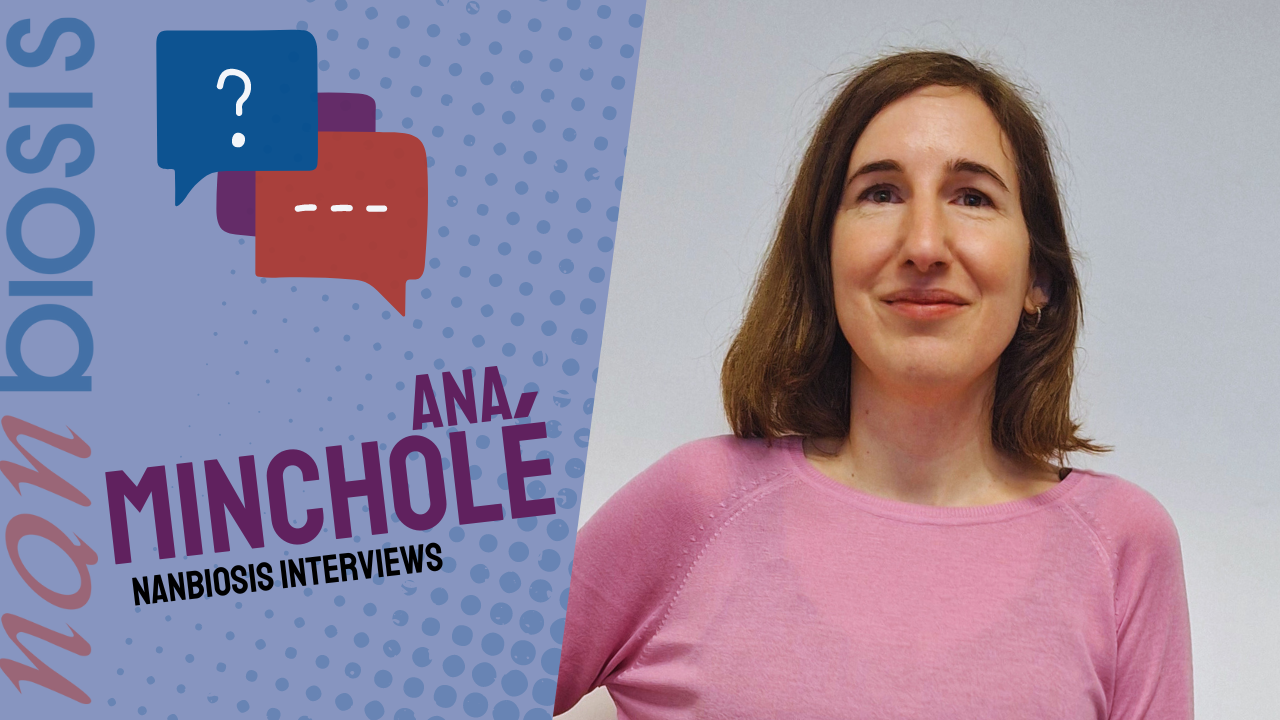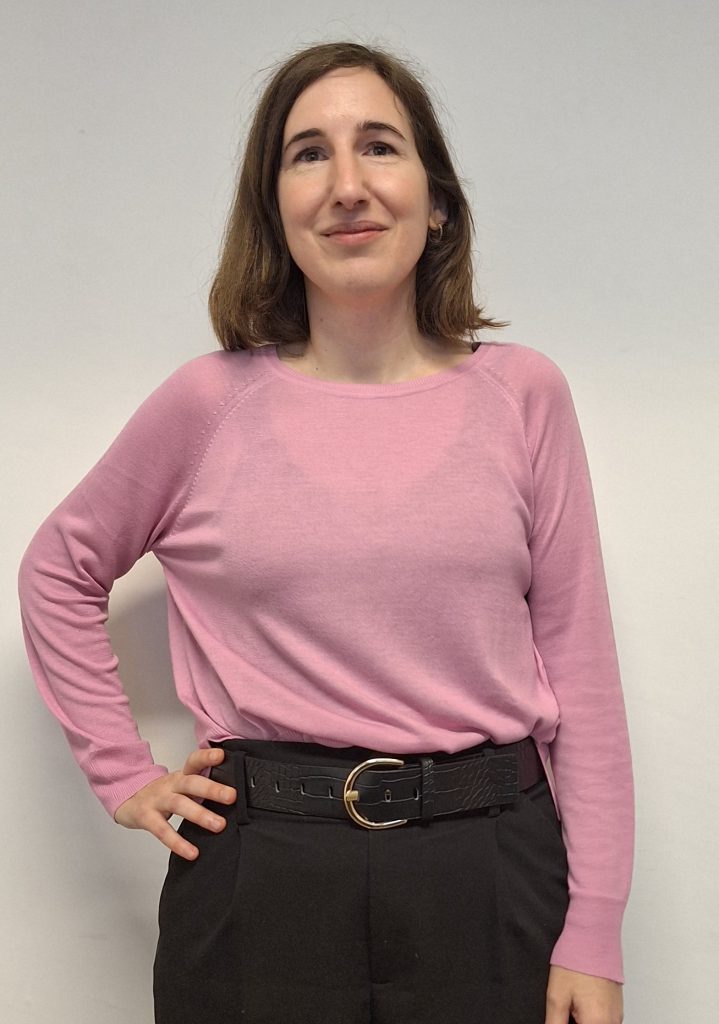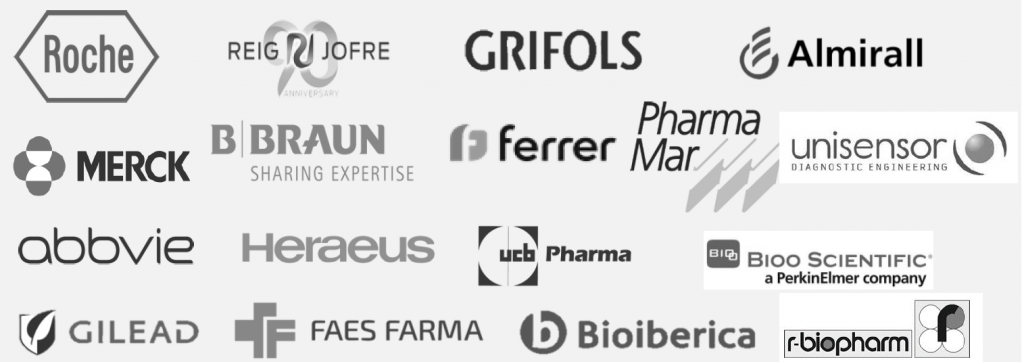
Dr. Mincholé discusses cardiac risk assessment, gender challenges in science, and the transformative potential of Digital Twins in healthcare research.
This is part of a series of interviews to several female researchers within the context of International Day of Women and Girls in Science 2024 and Woman’s Day 2024. For more interviews, visit our news section here.
March 2024, I3A-Unizar, Zaragoza (Spain)
The meeting room of the High Performance Computing cluster is a comfortable place. A whiteboard full of diagrams occupies a good portion of one of the side walls, creating a welcoming atmosphere where complex concepts become accessible. In stark contrast, a long table is presided over by a large screen and a video call system, making it clear that the boundaries of this place extend beyond its modest size.
The meeting has just ended. It has been intense. In it, the members of NANBIOSIS Unit 27 have given us a comprehensive update on their work. Although our background is more focused on the biomedical aspect, the explanation has been so didactic that we have ended up feeling like part of something much, much larger. Theirs is a work full of versatility and possibilities, only limited by the immense computing power of their machines and the indisputable brilliance of their staff.
Ana Mincholé, one of the team members, waits for the interview to begin. She has already expressed her nervousness to me but, without intending to question her word, I believe she underestimates herself. She was able to open our eyes during that complex meeting, along with the rest of the team, allowing an audience with little computational background to understand the endless possibilities of their equipment. This is a piece of cake for her.
The interview begins.
What motivated you to choose a career in science?
“I’m not sure if science chose me, or if humanities rejected me. I’ve always found physics and mathematics much more entertaining than humanities subjects.”
Interesting… Usually children tend to think that mathematics is very difficult, that physics is very boring… etc.
“It’s a bit strange. I felt more creative solving problems and looking for different ways to solve them, rather than in humanities subjects that I… um (laughs), when I thought I had done something great, they would tell me that… well, that it wasn’t (laughs again). I always knew that I was more into science than humanities disciplines. I liked it more.”
From the beginning, you felt that what they were teaching you in mathematics and physics was more natural for you.
“Yes, the typical problems such as ‘a train leaves from somewhere at such a speed of…’, I found them much more entertaining.”
Could you share with us a little about your research area and the projects you are currently working on?
“In general, my research focuses on the assessment of sudden cardiac death risk in patients with cardiovascular diseases. We work with patients who have suffered heart attacks, cardiomyopathies (heart defects), or patients with bradycardia who need pacemakers. We evaluate the risks using the electrocardiogram, which measures the electrical activity of the heart, and in my case, also through computational models. These are virtual replicas of a patient’s heart that include all their clinical information, and you can evaluate them under different scenarios and see how they respond.”
Does this have to do with the ‘Digital Twins’? That is, replicating on a computer what happens to a person and seeing how the conditions you apply affect them.
“Yes, that’s it. In the case of the heart, for example, we can emulate cardiac anatomy through magnetic resonance images, then you can include fibrotic areas, infarcted areas, electrical dynamics… and with all this, you can simulate the electrical activity of a heart.”
So, not only can you mimic a healthy heart, but also a diseased one.
“That’s right. In hearts, there are always some areas that activate spontaneously. Normally this poses no danger, but in those hearts that already have some arrhythmogenic substrate, meaning that they have some type of previous pathology such as infarcted or fibrotic areas, those activations can cause an arrhythmia.”
What have been the greatest challenges you have faced as a woman in the field of scientific research?
“What a complicated question! There are so many challenges you face simply as a researcher… Perhaps more as a woman? I could highlight that I am a mother of two children, and research is always something that is constantly moving. Facing maternity, personally, I had a lot of plans and I told myself that I wouldn’t leave anything behind. I believed that, as soon as I felt better, I would start doing things, reading articles… but life with a newborn is what it is, and in the end, you don’t do it. And you have that fear and you start to wonder things such as ‘What happened during all this time?’, ‘Will I be able to catch up?’. “
So, I understand that you think the measures that are already in place are insufficient.
“Of course. The thing is research never stops. Science keeps advancing, with or without you. And although in the end it’s not that big of a deal, it’s a feeling you constantly have. Research is a bit strange: on one hand, you have a lot of flexibility, but at the same time, you never really disconnect. Deadlines come, and if you have to work on the weekend, you do it. Or maybe there is that Tuesday in which nothing has come out right, and at night you keep thinking about why the experiment you did in the morning didn’t work out. You keep coming up with ideas, and never really stop thinking about it.”
It is interesting what you’re saying because that applies to a lot of research fields. One might think that in the case of in silico experiments it would not be as bad as, for example, people working with animal models.
“Well, in our field of in silico experiments, you always encounter an error right on Friday before leaving work (laughs). Although during my master’s, I worked on a more experimental project, and it’s true that it’s a whole different level: If something doesn’t work out, you have to wait until it finishes, and I think in that sense, it’s much more demanding.”
Have you experienced any kind of gender bias or added difficulty in your scientific career? How have you addressed this situation?
“I feel like I haven’t faced a significant bias because of being a woman. Also, I’ve felt supported in all the research groups I’ve been part of. It’s true that in some fields, certain attitudes like paternalism and condescension arise because of being young and a woman. But young people stop being young… and women never stop being women (laughs). In those cases, you have to demonstrate that you know what you know, which adds pressure.”
There are fields and careers where there are many more women than men. This is the case for the more ‘bio’ careers. How do you see parity in your field?
“In my field, there’s quite a gender parity. Moreover, in all the groups I’ve worked with, there’s been a fair balance between men and women. I won’t deny that the further you advance in the research career, the more gender bias there is. Generally, there are more men in leadership positions than women, and women tend to have a harder time too. In my case, I haven’t personally experienced any gender bias. I’m lucky to be able to collaborate with people who add value. And with those who don’t, there’s no need for us to collaborate.”
How do you think these barriers can be overcome?
“Visibility. It has worked in other areas. I, being a bit older, remember not long ago when we had a female Minister of Defense, and there were those who were shocked. And nowadays, we don’t give it importance anymore. The visibility of women in science is constantly increasing. An example is the researcher behind the Oxford/Astra Zeneca COVID vaccine, whose presence in the media was quite prominent. We see it more and more often.”
What advice would you give to young women considering a career in science?
“I would tell them to go for it, that it’s a very rewarding career with plenty of opportunities. Sometimes, I think there’s a lack of female role models in science and also in other sectors. This is because even when there’s a mixed team working behind the scenes, the predominant presence of male figures gives a biased picture. And I believe it’s important to convey that science isn’t just for men.”

“(I) design and work on a research line that combines computational models with cardiac signals and images. This was done with the aim of stratifying arrhythmic risk and understanding its mechanisms.“
—Dr. Ana Mincholé, researcher at Unit 27.
Have you had any ‘Eureka’ moments in your career? What do you consider to be your greatest achievement or contribution in your field on a professional or personal level?
“Luckily in research, you have quite a few ‘Eureka’ moments. And thank goodness for that! Because there are also many frustrating moments that require a lot of effort and work. Thus when something finally works out, it’s very satisfying. But you have to constantly deal with ups and downs.
As for my greatest achievements, at the end of my PhD, we managed to develop a novel biomarker that was closely related to arrhythmic risk. That was a real high. Something more recent could be to design and work on a research line that combines computational models with cardiac signals and images. This was done with the aim of stratifying arrhythmic risk and understanding its mechanisms. I’m not sure if I would define it as an achievement, but it’s a line of work that I’m particularly proud of.”
Where do you see yourself in 5 or 10 years? And where do you see this technology?
“In the future, I imagine Digital Twins technology being more integrated into clinical practice, with tangible benefits for patients. I think, at the moment, it’s more used at the research level and needs better explanation to understand its potential. But I’m convinced that this technology will be very useful in clinical settings, and I would like to be present when that happens.
Digital Twins of the heart are detailed virtual replicas that incorporate clinical information and specific measurements from each patient in addition to how the heart functions. They are very self-explanatory, and they answer the question of ‘why’ something happens, providing possible explanations for what is going on. Although these models are very descriptive, I don’t see them as incompatible with other types of models, such as artificial intelligence-based solely on data.
In the case of Digital Twins, behaviors and dynamics are introduced, making them much more explanatory. Furthermore, they are multiscale models that cover everything from the cellular level to propagation through cardiac tissue and the torso, even simulating the patient’s electrocardiogram. These multiscale models allow for personalized therapies and specific assessment of arrhythmic risk for each individual.”
How do you think we can encourage more women and girls to participate in science?
“I have participated in initiatives that are fantastic for explaining different professional experiences to people who have to choose a career. I also believe that we need to give visibility to science; not only from the perspective of research, but by showing all the possibilities that pursuing a career in science offers. I think, in the end, one has to choose the career they like the most, and then they can always redirect their decisions to work in what motivates them at each stage of life. The important thing is to decide to do things that fulfill you, motivate you, and do them well.
For example, I studied Physics and never imagined doing a PhD. Then, I went on Erasmus, ended up doing a master’s, and during the master’s thesis project, I discovered that biomedical research fascinated me and fulfilled me. So, I ended up doing a PhD. Life takes you places, and the important thing is to do things that bring you fulfillment and that you enjoy.”
Thank you very much Ana for your time.
“Thanks a lot, to you.”
For more interviews like this, visit our news section here.
Additional information:
The goal of NANBIOSIS is to provide comprehensive and integrated advanced solutions for companies and research institutions in biomedical applications. All of this is done through a single-entry point, involving the design and production of biomaterials, nanomaterials, and their nanoconjugates. This includes their characterization from physical-chemical, functional, toxicological, and biological perspectives (preclinical validation).
In order to access our Cutting-Edge Biomedical Solutions, place your request here.
NANBIOSIS has worked with pharmaceutical companies of all sizes in the areas of drug delivery, biomaterials and regenerative medicine. Here are a few of them:









